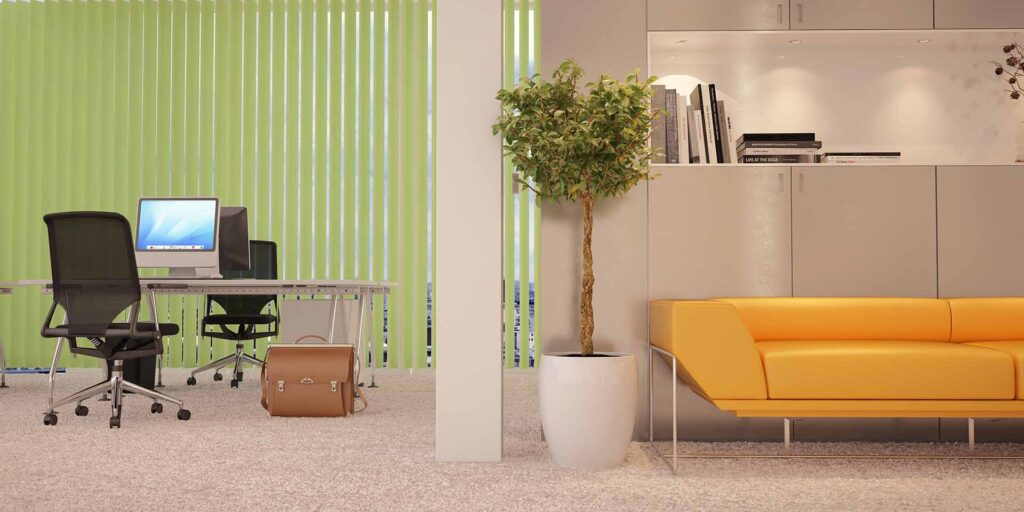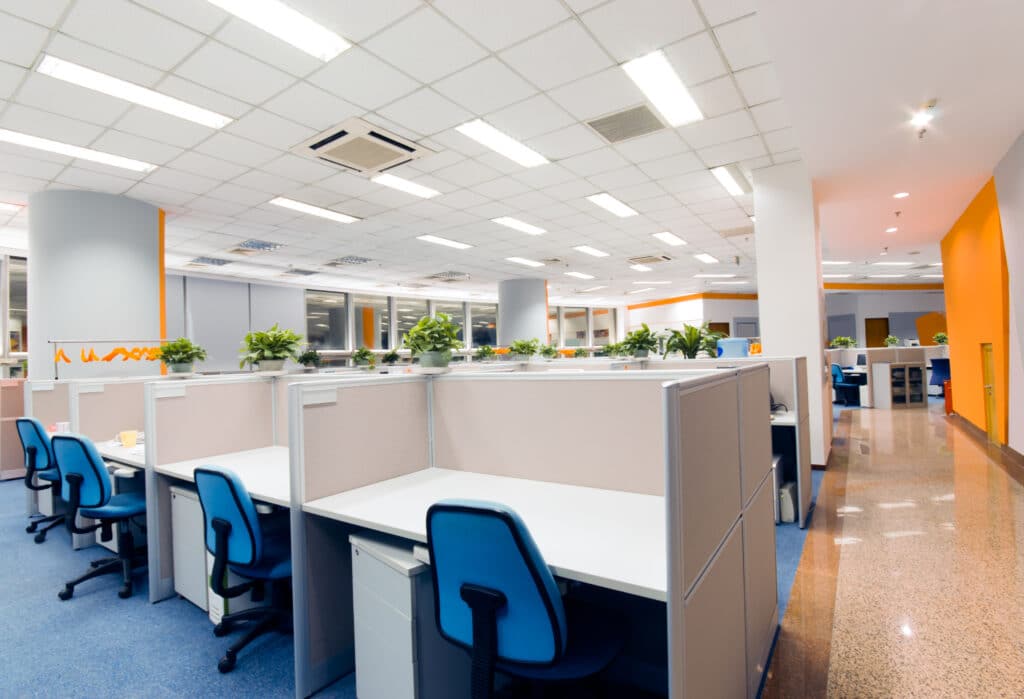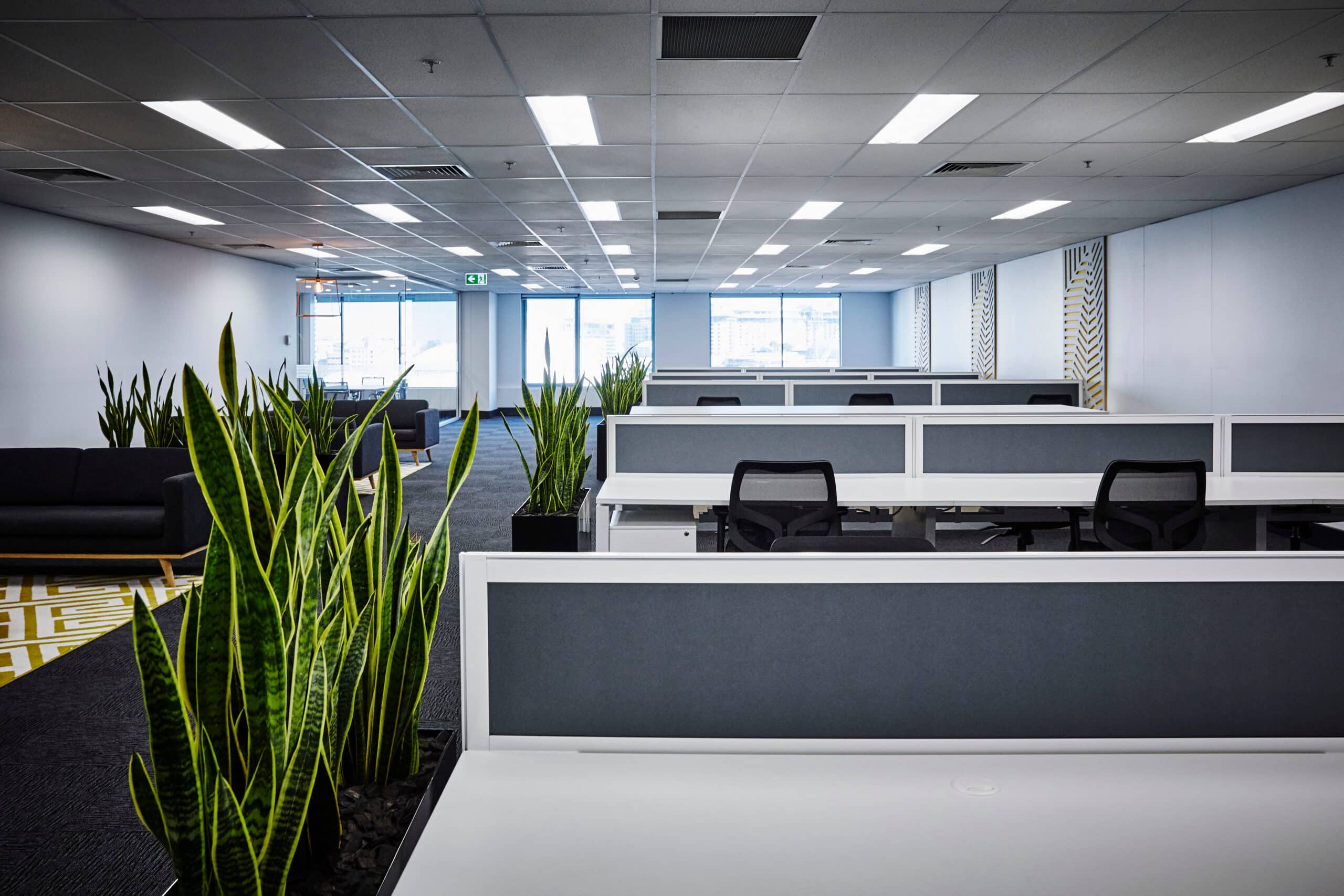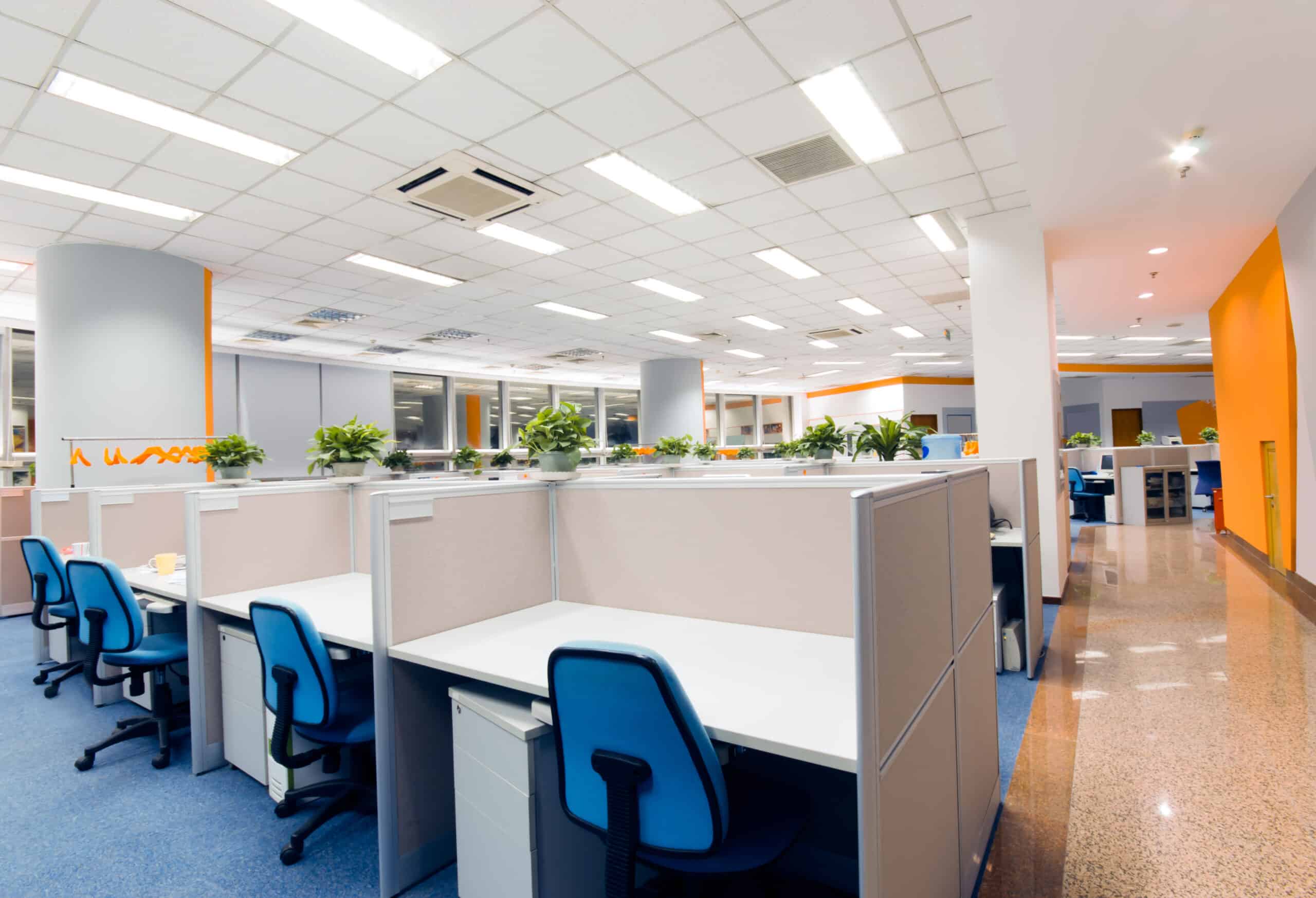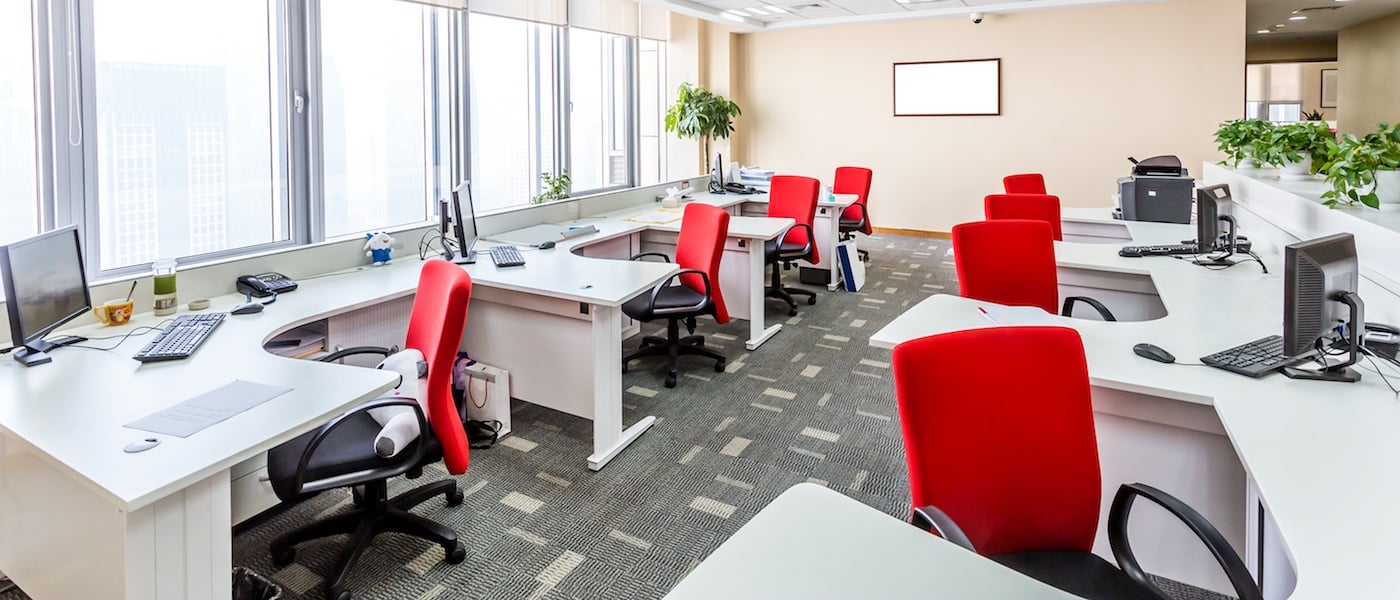Coronavirus has sent a large percentage of the nation’s office staff to work from home – for now. While working from home can be an exciting opportunity for some employees and employers, many businesses remain dependent upon in-person interactions and in-house office staff to keep their business going. For these organizations, health-focused retrofits made from plexiglass dividers, safety screens, and safety doors help companies operate according to CDC recommendations.
When modifying your commercial property, it’s important to select screens and barriers for every type of work furnishing. In the past, social distancing was rarely a consideration for office furniture installers and manufacturers. Old office spaces were designed for personal contact, collaboration, and space efficiency. Post-pandemic office spaces must maintain space efficiency, personal contact, and collaboration – and all while preventing the spread of germs.
Office Benching
Office benches, made from nested tables and filing cabinets assembled in an L shape, were designed to be multi-functional and totally without walls or screens. These flexible workspaces are common in today’s open office environments. While office benches have inherent value in community-focused workplaces, this type of furnishing can be a liability in the age of COVID-19.
There are many ways that you can make office benches safer and more socially distant. Plexiglass screens create natural, see-through barriers that can prevent or slow the spread of germs while also serving as a reminder to be socially distant.
- Add freestanding gallery panels. Freestanding gallery panels and modular walls create barriers between desks, to prevent aerosols from becoming a danger to workers.
- Increase the height of existing panel screens (center or sides). Existing panel screens are often made to create division but not to block germs transmitted through the air between people. Adding height to existing panels can block germs and prevent the spread of illnesses.
- Separate benches with storage (like bookshelves or filing cabinets). You don’t have to stop the transmission of germs with plexiglass panels. You can also stop the spread with large pieces of furniture, like shelves or filing cabinets.
- Alternate seats to add open spaces between. Placing space between office benches can help add social distance in a way that seems natural.
Height-Adjusting Tables (Sit-Stand Desks)
Sit-stand desks are popular among ergonomic-minded business professionals because they allow employees to stand or sit as needed. For sit-stand desks, screens must be mounted to the desk to prevent them from falling when an adjustment is made. Remember that cords and plugs shift when desk surfaces rise and lower, so failure to screw panels and screens into place can cause cords and other items on the desk to drag screens down.
Another way to make workstations with sit-stand desks safe is to rotate and stagger desks for greater distancing between employees. By spreading employees out and keeping at least 6 feet of space between desks, there’s less chance of spreading germs during normal daily interactions.
Independent Desks
Panel and screen modifications make independent desks safer for social distancing purposes. Most of these changes are designed to enable people to see their neighbors, what is happening around them, and activities that are taking place in the workplace – all while minimizing exposure to germs.
- Desk-mounted back screens. Desk-mounted back screens provide privacy and can help prevent the transmission of aerosols.
- Desk-mounted surround screens and enclosures. Surround screens provide even more protection and more privacy in spaces where separation is important.
- Separate facing and/or adjacent desks with floor-standing delineation. Desks that face one another can be made safer with modular walls between them.
Panels and Doorways
Panels and doors can be installed anywhere! Add doors to cubicles to reduce air circulation in the office. Doors provide privacy and can help stop the spread of illnesses like COVID-19. Some businesses add panels along corridors or walkways to prevent the spread of germs between people passing through the hallway.
Some screens are easily screwed into the floor to be permanent, while modular walls have legs for easy transportation from one place to another. Modular walls are useful for dividing cubicles to give employees personal space and providing safety and privacy in lobbies, testing centers, meeting rooms, and more.
Screens for Nearly Every Business
Almost every business has been impacted by COVID-19. Screens and furnishings of different types are in high demand across industries. Modular walls are commonly installed in open office spaces to create division between employees, while plexiglass dividers can be installed on top of cubicle walls to add height and prevent the transmission of aerosols between cubicles.
Screens are even found in industries like restaurants, salons, and schools.
- Plexiglass screens divide booths and tables at restaurants to keep restaurant patrons safe while dining.
- Desk-mounted surround screens made from plexiglass help keep students and teachers safe in schools.
- Modular walls keep customer chairs separate in open-space hair salons.
- Plexiglass sneeze guards help keep patients and front desk workers separate in doctor and dental offices.
Whatever changes need to be made to the environment, it’s important to work with professional furniture installers to make those changes. Installations done by the pros often look better, last longer, and are safer than DIY installations performed by in-house staff.
Looking for Ways to Make Your Office Safer? Contact Houston Installation Services
COVID-19 has increased demand for paneling and plexiglass screens in small businesses and public spaces. To find out more about how our screens, enclosures, and paneling can help keep your employees safe, call our reputable office furniture installers today to make an appointment and find out more about our desktop and cubicle modifications as well as our easy-to-move and install screens.
For more information on the recommendations for returning to work from the CDC, please visit their website.

